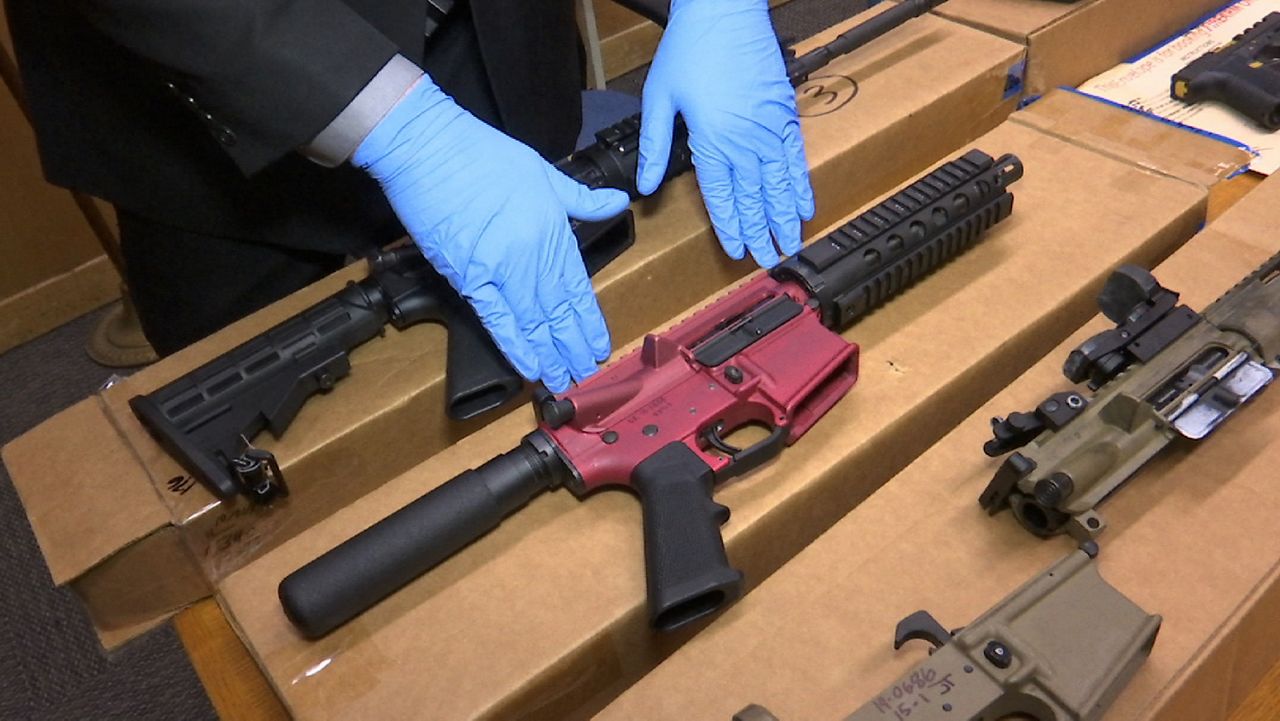On Friday, the United States Justice Department proposed a rule that would expand the definition of firearms in an attempt to close the loophole for so-called "ghost guns," homemade firearms that lack serial numbers used to trace them, which are often purchased without a background check.
“We are committed to taking commonsense steps to address the epidemic of gun violence that takes the lives of too many people in our communities,” Attorney General Merrick Garland said in a statement. “Criminals and others barred from owning a gun should not be able to exploit a loophole to evade background checks and to escape detection by law enforcement."
The rule would require that manufacturers include a serial number on the firearm “frame or receiver” in easy-to-build firearm kits, according to the Justice Department, in an attempt to help law enforcement trace guns used in a crime.
The proposal would also establish requirements for federally licensed firearms dealers to have a serial number added to 3D printed guns or other un-serialized firearms they take into inventory, and make clear that retailers must run background checks before selling kits that contain the parts necessary for someone to readily make a gun at home, in order to prevent them from being sold to convicted felons and other prohibited purchasers.
For years, federal and local law enforcement officials have been sounding the alarm about what they say is a loophole in federal firearms law, allowing people who are generally prohibited from owning guns to obtain them by making the weapons themselves. Ghost guns have increasingly been turning up at crime scenes and being purchased from gang members and other criminals by undercover federal Alcohol, Tobacco, Firearms and Explosives agents.
"This proposed rule would help keep guns out of the wrong hands and make it easier for law enforcement to trace guns used to commit violent crimes, while protecting the rights of law-abiding Americans," Garland continued. "Although this rulemaking will solve only one aspect of the problem, we have an obligation to do our part to keep our families and our neighborhoods safe from gun violence.”
The Justice Department estimates that more than 23,000 weapons without serial numbers were seized by law enforcement from 2016 to 2020 and were identified in connection with 325 homicides or attempted homicides.
It’s legal to build a gun in a home or a workshop, and advances in 3-D printing and milling have made it easier to do so. Ready-made kits can be purchased for a few hundred dollars online without the kind of background check required for traditional gun purchases.
But under the proposed rule, retailers would be required to run background checks before selling some of those kits that contain the parts necessary for someone to readily make a gun at home.
The critical component in building an untraceable gun is what is known as the lower receiver, a part typically made of metal or polymer. An unfinished receiver — sometimes referred to as an “80% receiver” — can be legally bought online with no serial numbers or other markings on it, no license required.
Converting the piece of metal into a firearm is relatively simple and takes only a few hours. A drill press or a metal cutting machine known as a Computer Numeric Control, or CNC, is used to create a few holes in the receiver and well out a cavity. The receiver is then combined with a few other parts to create a fully functioning semi-automatic rifle or handgun.
The Associated Press contributed to this report.



